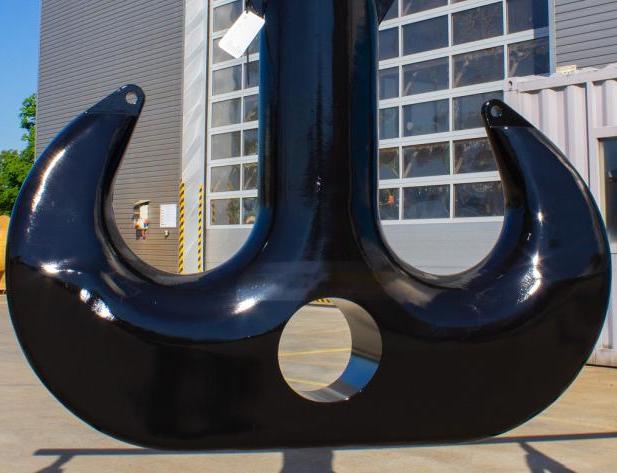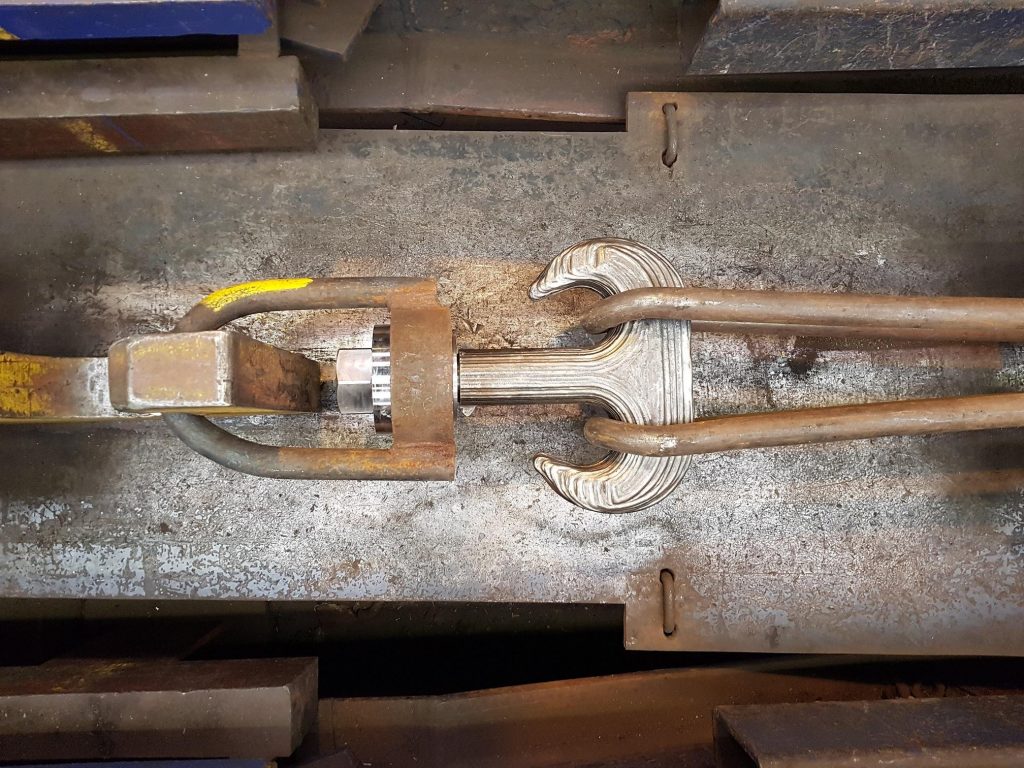Global heavy equipment manufacturer Huisman has wrapped up a testing program that has seen it 3D print four large-format crane hooks, each capable of lifting up to 350 metric tons.
Tested under the supervision of certification firm Lloyd’s Register, Huisman’s heavy duty hooks measure some 1.7 x 1.3 meters and weigh in at a hefty 1,700 kg, making them nine times larger than its previous designs. By 3D printing the equipment rather than casting or forging it, the company says that it’s been able to reduce its related production costs in addition to cutting its component lead times.

Huisman hooked on AM
Based in the Netherlands, Huisman manufactures industrial equipment for clients in the civil, renewables, leisure and oil and gas industries. For at least five years now, the firm has sought to test the potential of Wire Arc Additive Manufacturing (WAAM) for creating its crane hooks, and producing enhanced designs that outperform their conventional counterparts.
Back in January 2018, the company carried out its first successful load test on a 1,000 kg steel crane hook, which proved able to haul payloads of up to 80 metric tons at a time. Huisman then joined a consortium alongside RAMLAB, composed of Autodesk, DNV GL, Bureau Veritas, ABS and Voestalpine Böhler Welding, with the aim of additive manufacturing the world’s heaviest steel crane hook.
Not long afterwards, Huisman managed to 3D print a much larger 36,000 kg hook, which was certified by the American Bureau of Shipping (ABS) and installed aboard the OOS Serooskerke semi-submersible crane. Tipped as the first of its kind to find end-use deployment, the hook was seen at the time as an important step forward in the acceptance of 3D printed parts within the maritime and offshore industries.

Scaling-up maritime 3D printing
Much like their predecessors, Huisman’s latest hooks were WAAM 3D printed from high-grade tensile steel, but this time they’ve been scaled up to nine times the size of the original. As a result, each piece of loading equipment, comprising some 90 kilometers of welding wire, has shown an impressive lifting capacity of 350 metric tonnes during initial testing, which was carried out alongside Lloyd’s Register.
According to the company, using 3D printing to produce the large-format parts allowed them to be manufactured with a consistent level of internal quality, something which had been a costly and inconvenient drawback of cast or forged equipment. “The price of a forged hook increases exponentially with size, especially if it is a non-standard size,” explained Daniel Bílek, the project’s coordinator.
“If a hook is produced by casting, the problem of inconsistent internal quality could result in longer delivery times,” he continued. “All this led to the idea of making the hooks ourselves, using the so-called WAAM method. After five years of research, development and testing of 3D printed products, we have gained the necessary expertise to use this innovative method for the production of high quality crane hooks.”
“Crane hooks are commonly part of the delivery of heavy lifting cranes for the offshore industry, one of our key products.”
Huisman also says that switching to 3D printing has provided it with greater control over the production process, unlocking previously inaccessible hook designs as well as tailor-made materials with the strength, ductility and corrosion-resistance qualities needed, to make them ideal for producing equipment capable of carrying out arduous heavy lifting tasks.
Following the program’s initial success, the company now intends to expand capacity at its facilities in Sviadnov, Czech Republic, in which it currently has three welding robots. At its upgraded complex, Huisman aims to WAAM 3D print even larger hooks in future, with resulting equipment set to weigh up to 5,000 kg each.
WAAM’s industrial versatility
By taking a similar approach to that of conventional welding, WAAM technology can be used to create highly-robust parts that are capable of meeting demanding aerospace and maritime applications. French defense firm Naval Group, for instance, has partnered with the Centrale Nantes engineering school to WAAM 3D print the world’s first hollow propeller blade.
Likewise, the Damen Shipyards Group has managed to 3D print a large tugboat propeller known as the ‘WAAMpeller.’ Created in collaboration with RAMLAB, Promarin, Autodesk and Bureau Veritas, the final part measures 1.35 meters across, weighs 400kg and features a double-curved, geometric shape which incorporates tricky overhanging sections.
Elsewhere, Cranfield University has been a key driver of WAAM’s industrial applications, and in the past, its WAAM3D spin-out has addressed the needs of various aerospace clientele. Back in 2019, the firm 3D printed jet fighter parts for BAE Systems’ Eurofighters, as well as other prototypes alongside Thales Alenia Space.
To stay up to date with the latest 3D printing news, don’t forget to subscribe to the 3D Printing Industry newsletter or follow us on Twitter or liking our page on Facebook.
For a deeper-dive into additive manufacturing, you can now subscribe to our Youtube channel, featuring discussion, de-briefs and shots of 3D printing in-action.
Are you looking for a job in the additive manufacturing industry? Visit 3D Printing Jobs for a selection of roles in the industry.
Featured image shows one of Huisman’s 1,700 kilogram 3D printed crane hooks. Photo via Huisman.



